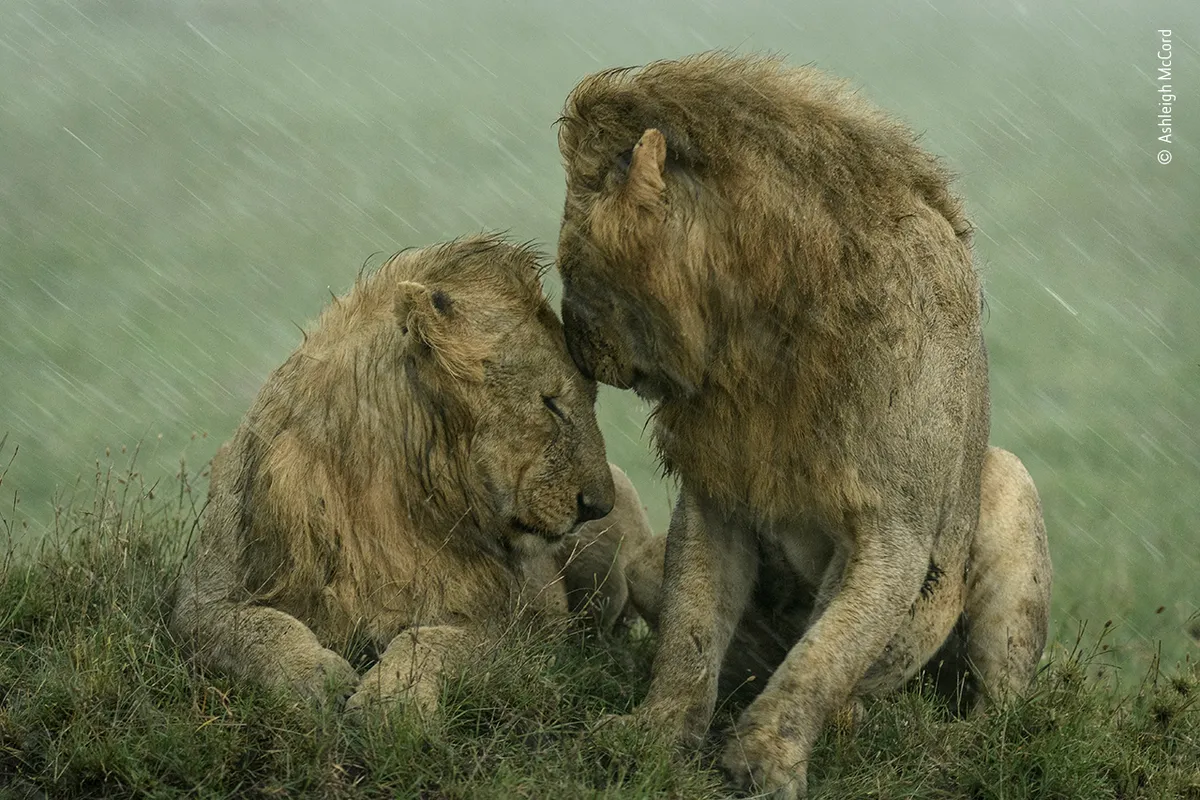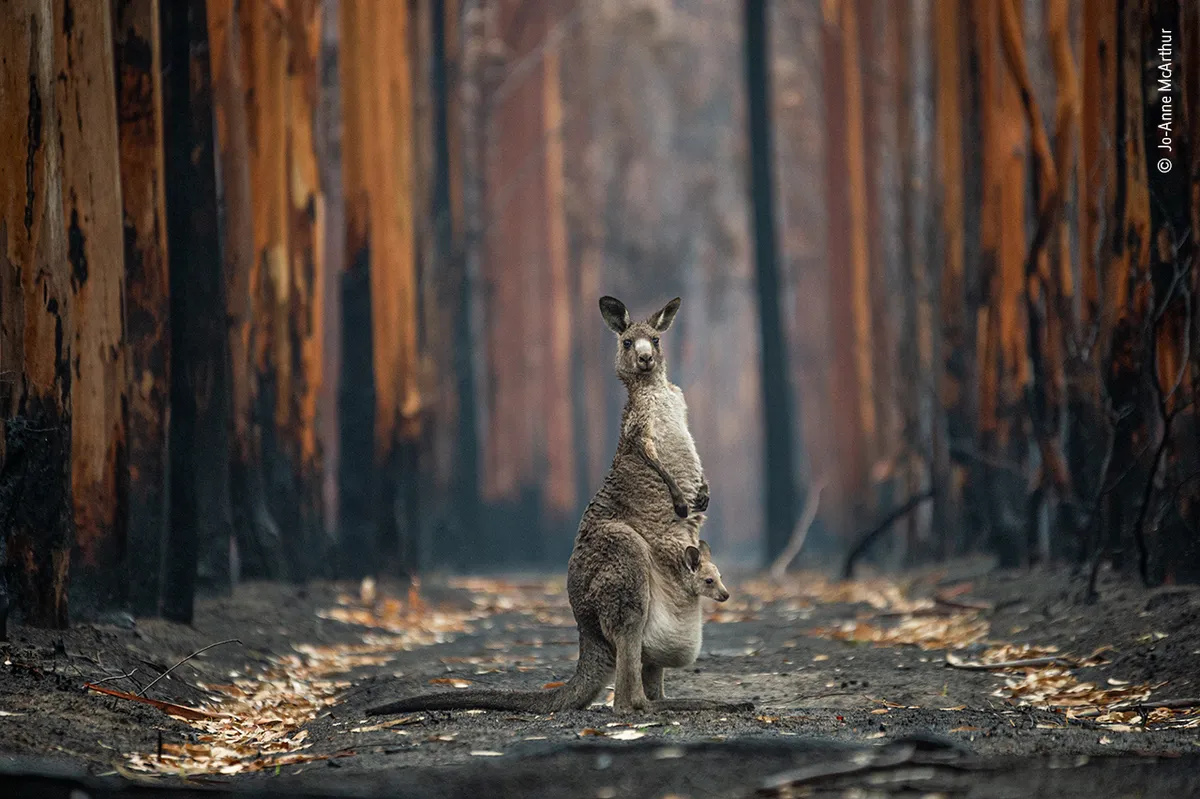With over 31,800 votes from members of the public around the world, this ethereal image of a willow trees reflected in a frozen lake has been announced as the winning image for this year's category winner for the People’s Choice Award of the renowned Wildlife Photographer of the Year competition.
The image, titled “Lake of ice”, was submitted by Italian photographer Cristiano Vendramin in dedication to a lost friend who loved the Santa Croce Lake in northern Italy.
“I hope that my photography will encourage people to understand that the beauty of nature can be found everywhere around us, and we can be pleasantly surprised by the many landscapes so close to home,” says Vendramin. “I believe having a daily relationship with nature is increasingly more necessary to have a serene and healthy life. Nature photography is therefore important to remind us of this bond, which we must preserve, and in whose memory, we can take refuge.”
The winning image was one of 25 images that were shortlisted by the judges for the People's Choice Award (view the full gallery of the 25 images), and in addition to Vendramin's wintry image, four more photos were awarded ‘Highly Commended’ following the public vote (see below). All five images will be displayed in the Wildlife Photographer of the Year exhibition at the Natural History Museum, London (NHM), which runs until Sunday 5 June 2022.
“Cristiano’s poignant image symbolises the positive impact nature can have on our wellbeing and lives,” says Dr Douglas Gurr, director of the NHM. “It can provide solace and a space to reflect on the past and even spark hope for the future. These past two years have redefined what truly matters in life, the people and the environments that play a crucial role in our own personal ecosystems. I hope those who look at this landscape frozen in time, are reminded of the importance of connecting to the natural world and the steps we must all take to protect it.”
The Wildlife Photographer of the Year competition has been running since 1965, when it was first launched by BBC Wildlife (then called Animals). The NHM joined forces in 1984 to create the competition as it is known today, and now solely runs and owns it. It has grown to attract over 50,000 images submitted to the 2021 competition. The fifty-eighth Wildlife Photographer of the Year competition closed for entries on Thursday 9 December 2021, and the winning images will be revealed in October.
Learn more about Wildlife Photographer of the Year:
View all the Winning and Highly Commended images:
To view the images as a slideshow, click on the arrows in the top right-hand corner of the photos below.

Santa Croce Lake is a natural lake located in the province of Belluno, Italy. In winter 2019 Cristiano noticed the water was unusually high and the willow plants were partially submerged, creating a play of light and reflections. Waiting for colder conditions he captured the scene in icy stillness. After taking the image, he was reminded of a dear friend, who had loved this place and is now no longer here, "I want to think he made me feel this feeling that I'll never forget. For this reason, this photograph is dedicated to him".
Canon EOS 6D 100-400mm f4.5-5.6 IS USM II lens; 1/8 sec at f8; ISO 200; Lee polariser; remote control; Feisol tripod.

During a visit to the Maasai Mara, Kenya, Ashleigh captured this tender moment between a pair of male lions. At first, she had been taking pictures of only one of the lions, and the rain was just a light sprinkle, although the second had briefly approached and greeted his companion before choosing to walk away. But as the rain turned into a heavy downpour, the second male returned and sat, positioning his body as if to shelter the other. Shortly after they rubbed faces and continued to sit nuzzling for some time. Ashleigh stayed watching them until the rain was falling so hard that they were barely visible.
Nikon D500 300mm f2.8 lens; 1/200 sec at f2.8; ISO 720.

Jo-Anne flew to Australia in early 2020 to document the stories of animals affected by the devastating bushfires that were sweeping through the states of New South Wales and Victoria. Working exhaustively alongside Animals Australia (an animal protection organisation) she was given access to burn sites, rescues and veterinary missions. This eastern grey kangaroo and her joey pictured near Mallacoota, Victoria, were among the lucky ones. The kangaroo barely took her eyes off Jo-Anne as she walked calmly to the spot where she could get a great photo. She had just enough time to crouch down and press the shutter release before the kangaroo hopped away into the burned eucalyptus plantation.
Nikon D4S Sigma 120–400mm f4.5–5.6 lens; 1/500 sec at f5.6; ISO 2500.

Black bear cubs will often climb trees, where they wait safely for their mother to return with food. Here, in the depths of the temperate rainforest of Anan in Alaska, this little cub decided to take an afternoon nap on a moss-covered branch under the watchful eye of a juvenile bald eagle. The eagle had been sitting in this pine tree for hours and Jeroen found the situation extraordinary. He quickly set out to capture the scene from eye-level and, with some difficulty and a lot of luck, was able to position himself a bit higher on the hill and take this image as the bear slept on, unaware.
Canon EOS 5D Mark III Sigma 150–600mm f5.0–6.3 lens; 1/320 sec at f6.3; ISO 640.

In the Lishan Nature Reserve in Shanxi Province, China, Qiang watched as two male golden pheasants continuously swapped places on this trunk – their movements akin to a silent dance in the snow. The birds are native to China, where they inhabit dense forests in mountainous regions. Although brightly coloured, they are shy and difficult to spot, spending most of their time foraging for food on the dark forest floor, only flying to evade predators or to roost in very high trees during the night.
Nikon D5 + 400mm f2.8 lens; 1/2500 sec at f/2.8; ISO 320.
